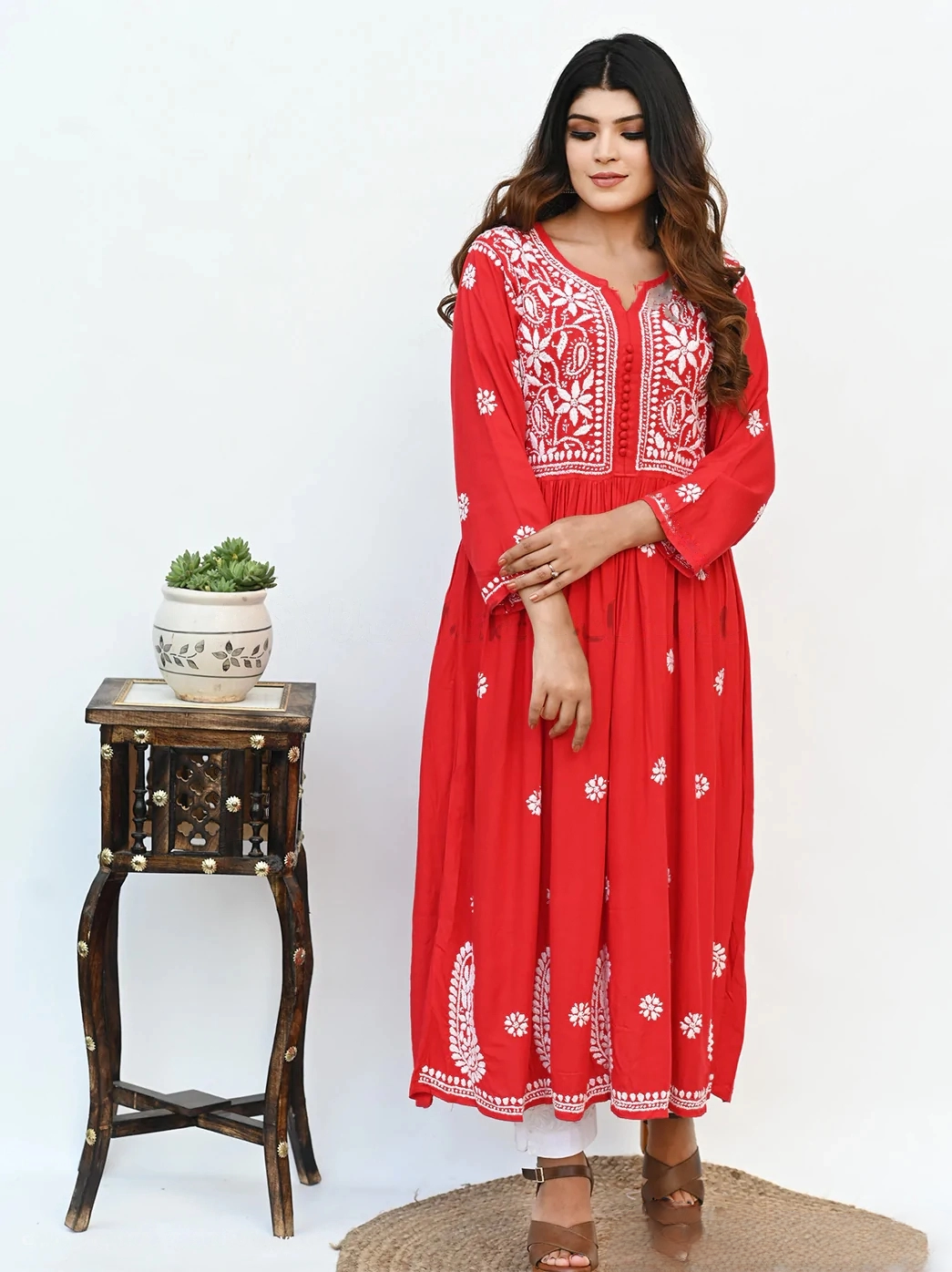While you may look through different designs and patterns of Chikankari, know there’s so much more to learn about popular clothing. We all know that Chikankari embroidery has been famous for centuries, but do we know how much it has changed since then?
To say the least, Chikankari has adapted and upgraded at every level, and that’s feasible to adapt by every generation. Likely to say, we will inform you how Traditional Chikankari differs from Modern Chikankari designs.
See Also: Handcraft Vs. Machine Embroidery
Chikankari: An Old Art Form
We all must know how Chikankari origins lie in the city of Lucknow, Uttar Pradesh, India. Earlier, when the Mughals were residing in India, Chikankari dates back to that time, yet still carries the same delicate essence of its work.
It involves minute, and delicate white thread work on fine muslin fabric, creating beautiful floral and paisley patterns. The embroidery technique has been passed down through generations, but as with any art form, it has evolved over time.
More so, today, there are two distinct types of Chikankari embroidery: Traditional and Modern Chikankari. It would be misleading to say they differ a lot, as that’s not true. In general, Modern Chikankari is a slightly upgraded version of the traditional Chikankari design and its work. Henceforth, you can learn about them and then make your choice before buying the final product.
Choice of Chikankari Design
If someone is considering buying a Chikankari outfit or clothing, it’s essential to look through its various designs. As a matter of fact, there are various designs, patterns, and type of fabric that tells a lot about its culture. Similarly, the traditional side of Chikankari is helping to create a new form of Chikankari designs and vice versa.
The beauty of Chikankari speaks for itself. It is such a versatile form of art that it can merge with any attire and occasion. Regardless of the fact, both traditional and modern chikankari forms of Chikankari will look absolutely breathing no matter who wears it. More so, there are various colours, designs, patterns, and fabrics of Chikankari that you can choose accordingly.
Traditional Chikankari Embroidery
Traditional Chikankari is the original form of the embroidery technique. It involves intricate, hand-stitch patterns on fine, white muslin fabric. More so, the design typically depicts – nature with flowers, vines, paisleys and other common motifs.
Popular features of Traditional Chikankari include –
- Traditional Chikankari embroidery uses a needle and thread. Each stitch is carefully drawn using hands to create a beautiful, delicate design.
- The process can take several months to complete, and the result is a stunning, unique piece of art.
One of the defining features of traditional Chikankari embroidery is its use of white thread on white fabric. Likewise, it creates a subtle, elegant look that is both timeless and sober yet breathtakingly beautiful. Traditional Chikankari garments are usually for special occasions, such as weddings or formal events. They are considered a treasure as heirloom pieces that can be passed down from generation to generation.
Read Also: Chikankari Embroidery: Variety of Outfits
Modern Chikankari Embroidery
Modern Chikankari, on the other hand, is a more contemporary take on the traditional embroidery technique. While it still involves intricate hand-stitching, modern Chikankari incorporates new materials, colours, and patterns.
Popular features of Modern Chikankari include –
- Modern Chikankari designs may incorporate geometric shapes or abstract patterns rather than strictly floral motifs.
- It may feature colourful threads, generally using fabrics other than muslin.
- It’s easier to incorporate modern Chikankari into your everyday wear. Likewise, you can team it up with jeans, a skirt, or pants.
Another key difference between traditional and modern Chikankari is the production process. While traditional Chikankari typically involves the work of the hand, modern Chikankari may be more significant to machines or other tools to speed up the process.
Thus, it allows for a greater production volume in creating more modern Chikankari outfits. Furthermore, it’s making modern Chikankari more accessible and affordable to a wider range of consumers.
Bottom Line
Despite all the differences, traditional and modern Chikankari embroidery remains popular and highly valued for money. So, you can prefer the classic elegance of traditional Chikankari kurtis or the vibrant, contemporary look of modern Chikankari. Accordingly, there is no denying that the beauty and skill that goes into each piece are simply outstanding.
Likewise, you wear a Chikankari garment for a special occasion or simple event. Furthermore, it’s a way to add some unique style to your everyday wardrobe. Also, we are sure that you’ll appreciate the artistry and craftsmanship that goes into every stitch of making Chikankari.
Related Articles:
How to Care for and Maintain Your Chikankari Kurtis?

